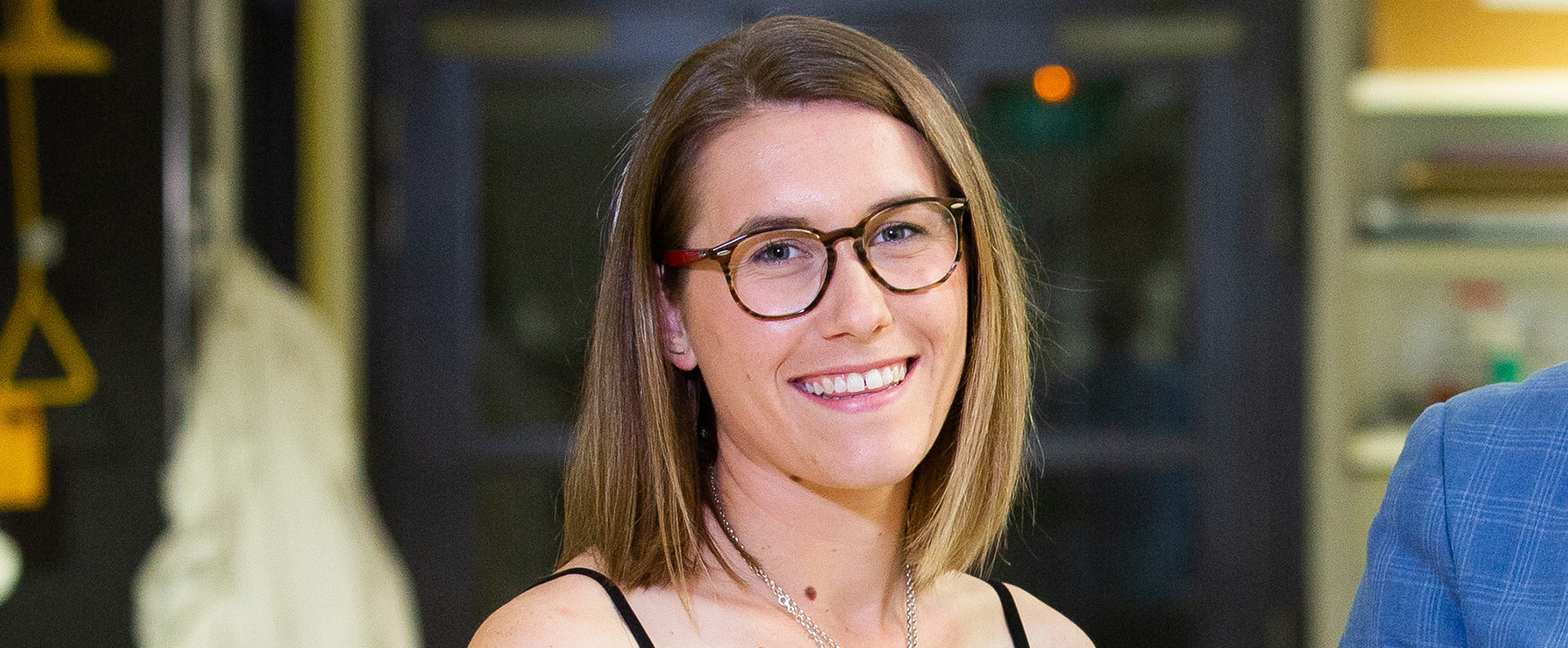I started my journey in the lab of Professor Maurice Curtis at the end of 2014. Little did I know the world of opportunities that would be open to me.
My project during my Honours year was focused on looking at whether exercise could increase the proliferation of neural stem cells (NSC). NSCs are nervous system cells that can develop into neurons and other cells. Prior to this, work had been done in this field using mice as a model of the human, demonstrating that running and swimming could enhance the production of these cells and increase their integration into brain circuits. If this concept was applied to humans, increased exercise could increase the proliferation of NSCs in the adult brain and potentially combat some of the loss of neurons in neurodegenerative disease, like Alzheimer’s disease. However, mice have significantly simpler brains than humans and it was still unclear whether the exercise-induced proliferation of NSCs concept could be translated between species. Therefore, our study aimed to determine whether this increased proliferation occurred in a larger animal with a brain that was more representative of humans, such as sheep. Our results were, unfortunately, inconclusive due to a variety of technical factors. However, Maurice and our collaborator Professor Elwyn Firth from the Department of Exercise Science at the University of Auckland encouraged me to write a publication about our work. This was the first study to test the exercise paradigm on sheep and quantify subsequent changes in neurogenesis. Fast forward to late 2017, when I was into the second year of my PhD, and our article was published in the Journal of Animal Science. Not only that, one of the images from the paper was used as the cover image. This has to be one of the first moments I thought “oh, I’m a real scientist” and it only fueled my fire, helping me push the boundaries throughout my PhD.
In 2015 I was awarded a W&B Miller Postgraduate Scholarship from the Neurological Foundation to start my PhD. I loved my work on the sheep brain but my passion for neuroscience had been and continues to be rooted in the fact I want to contribute to our understanding of human neurodegenerative diseases. One common symptom of a number of neurodegenerative diseases is anosmia, or the loss of the sense of smell. Because of this symptom and its early development in Parkinson’s and Alzheimer’s disease, the Curtis group has done extensive research on the brain region that processes the sense of smell; the olfactory bulb. As such, Maurice and I developed a project to further our understanding of disease processes in the olfactory bulb, utilising one key resource we have in the Centre for Brain Research, The Neurological Foundation Human Brain Bank. With the project developed, I aimed to determine whether there were changes in inflammation in the olfactory bulb in Alzheimer’s disease and whether these changes were associated with disease pathology. But as most PhDs go, my project did not quite follow the route anyone anticipated. The cell type my project has focused on is microglia, the innate immune cells in the human brain. As my understanding of this cell type grew and my aims broadened, I realised a significant amount of groundwork needed to be done to be able to understand microglia in the human brain. Because of this, my project has been focused around characterising microglia in the normal human cortex and ascertaining how they change in the cortex in Alzheimer’s disease.
While my project did not follow the route we were expecting, it has still opened up exciting opportunities for me. In the third year of my PhD, I was lucky enough to travel to Germany to present my research in the microglia workshop at the European Molecular Biology Organisation in Heidelberg and visit collaborators at the Max Planck Institute in Frankfurt. This was my first major international conference and travel. Needless to say, I arrived on my first day and I was terrified. But as soon as the workshop started, my terror turned into fascination. The work being presented was cutting-edge, utilising technology and resources we don’t have in New Zealand. It inspired new ideas for the future and has made me realise that an overseas post-doctoral fellowship at some point in my career will be invaluable for me to become the best scientist I can be. The work I presented established a more detailed method of characterising microglia in the normal and diseased human brain and I received some great feedback including some suggestions for future directions. Overall, this conference was my first time presenting my own work on the world stage and it gave me confidence in my ideas going forward.
On my way home from Heidelberg, I visited Peter Mombaerts and his research group in the Neurogenetics Unit at the Max Planck Institute. The Mombaerts lab has collaborated with the Curtis group for several years on characterising the human olfactory system. While I have not focused on the olfactory bulb in my PhD project yet, they have expertise in imaging and tissue analysis that has been valuable to my project. The conversations I had with members of the Mombaerts lab inspired me to challenge myself with new quantification methods.
This led me to collaborate with a local scientist, Dr. Emma Scotter, to develop a novel automated quantification method that has allowed me to identify changes in microglia in Alzheimer’s disease.






